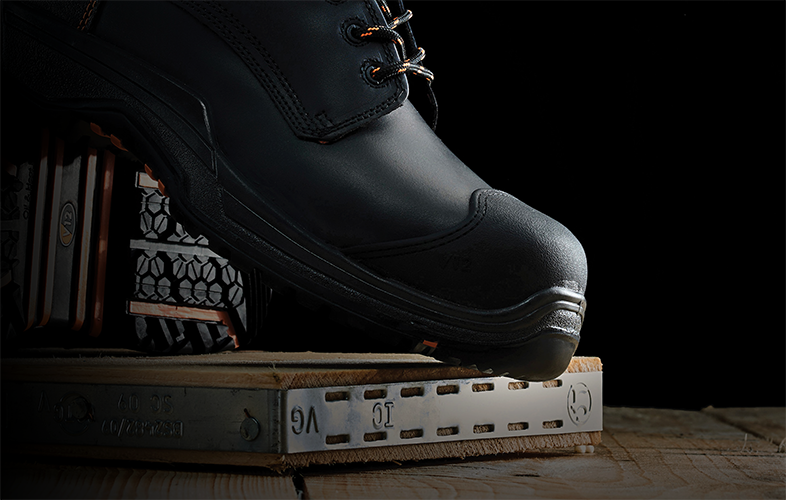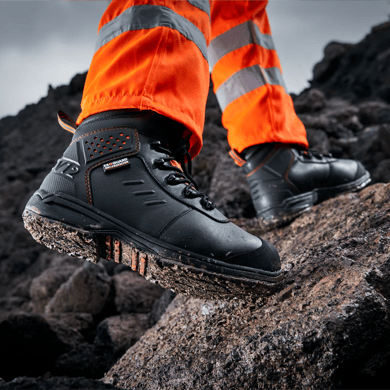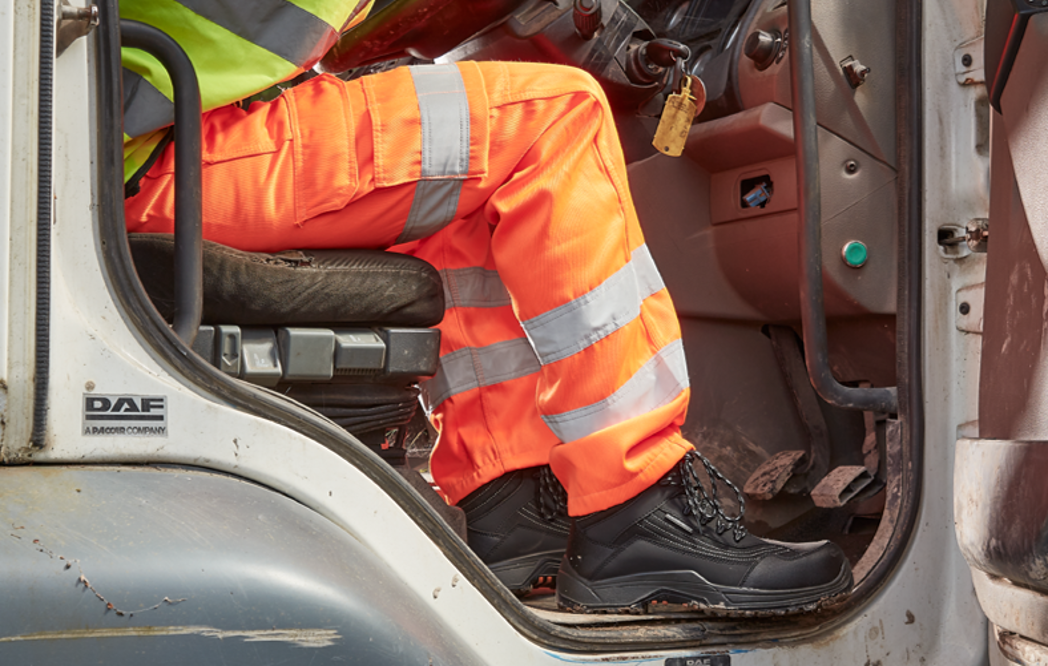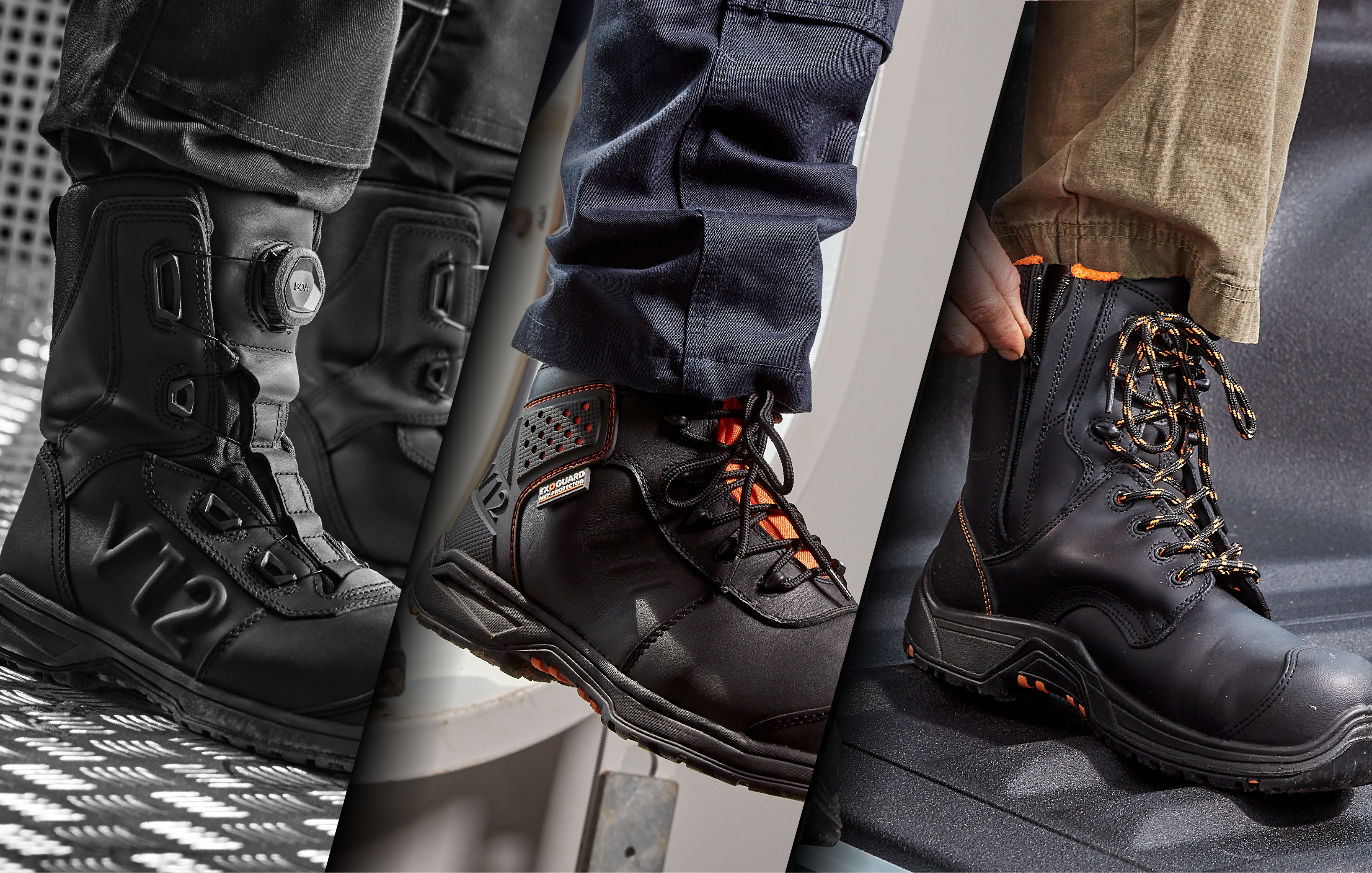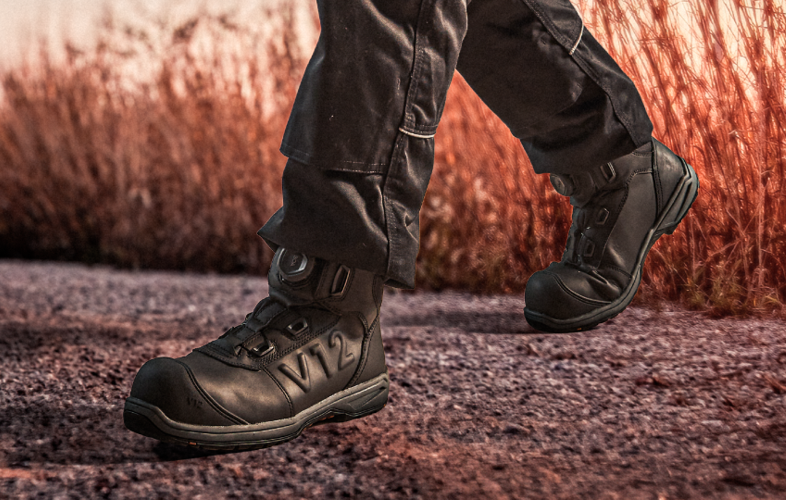We all know protecting the feet by wearing boots with a toecap when working around hazards is crucial. But did you know that a toecap isn’t the only important piece of toe protection a boot can have?
A scuff cap is often seen as a feature which is simply there for aesthetics, to preserve the leather in the toe area and stop it from holing or tearing after being scuffed. But it has a much bigger safety role to play.
If you’ve ever asked yourself ‘Should I have safety boots with a scuff cap?’ then this blog is worth a read. In it, we’ll explain how the toe area of a boot can easily wear down, and why it might be in your best interests to get a safety style with an abrasion-resistant scuff cap.
A Common Occurrence
A toecap area being worn down is very common. In a recent University of Bath survey of over 500 safety boot wearers, when asked what part of their boot most frequently needed replacing due to damage, ‘Toecap Exposed’ was the third most common reason.
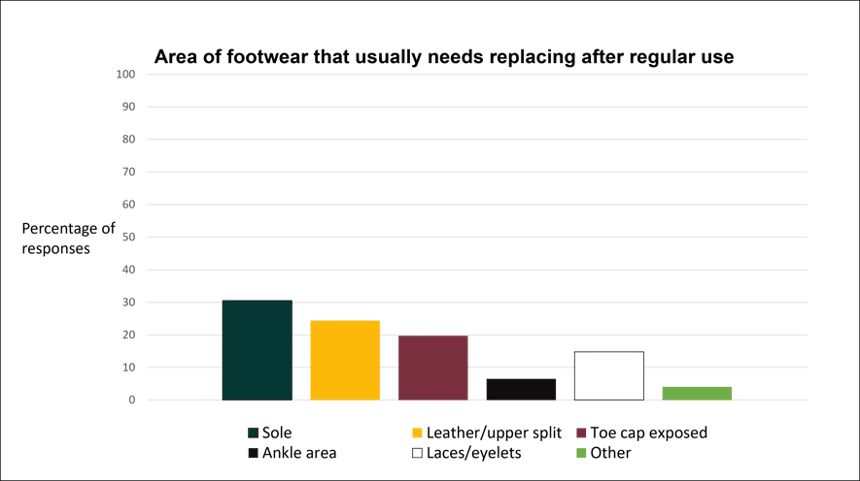
So how can it happen, and why is it such a problem?
COMMON CAUSES OF TOE AREA WEAR AND TEAR
Kneeling
Those in trades such as plumbing and engineering will often work for long periods of time on their knees. This means their boots’ toe area will be rubbing and scuffing on floors which are often hard and abrasive. Over time, this activity can lead the toe area material to become worn.
Are you a plumber who kneels a lot at work? Then you’ll want some of our abrasion-resistant recommendations. Head to this blog, and you’ll get the durable safety boots you need.
Repetitive Impact
In industries where heavy objects are frequently dropped or where workers engage in activities involving scuffing or striking objects, toe areas of safety boots get easily worn and weakened.
From roles in rugged environments featuring rough surfaces such as aggregate and quarrying, right the way through to the abrasive and sharp hazards on a building site or a recycling plant, a scuff cap will go a long way to preserve the life of the leather in the toe area for workers in many different safety roles.
Pictured: V12's metatarsal protection boot 'Invincible' features an abrasion-resistant scuff cap to safeguard the upper and toecap.
WHY IS AN EXPOSED TOECAP A PROBLEM?
- If the toe area material has worn down and it features a steel toecap, this means exposed metal. If you are working in an explosive or flammable area, an exposed steel toecap can create a spark if it’s scuffed or scraped against a rough surface like a metal step. And a spark in an explosive environment can lead to a serious compromise of safety, and even loss of life.
- If the toe material in a boot has worn away and left the steel toecap exposed, the wearer is at risk if a spark lands on it, because metal conducts electricity, which can pose a serious electrocution risk. Exposed steel toecaps coming into contact with a jumping spark can even cause an arc flash, which can lead to a potentially devastating explosion.
- An exposed toecap might look intact, but after a couple of knocks or impacts, the metal or composite could have thinned through being worn down or developed small cracks, which will only get bigger over time. As the toe area material degrades through these impacts, its strength reduces, and so a dropped object falling onto the foot can result in serious injury, due to the compromised toe area. This means your footwear won’t necessarily perform to the standard it was originally designed to be at.
- If your boots are waterproof and the leather across the toes of the boots becomes ripped or torn, waterproofing integrity could well be compromised - leading to wet feet, an uncomfortable shift and a waterproof membrane which has to work harder, so may not last as long.
- The upper of a safety boot is there to help maintain its form and shape, so if the toe area material is not there to do its job, internal componentry such as the toecap can start to move. And that means it won’t be in the correct place to stop a potentially serious foot injury.
And, as well as safety, you should be thinking about your reputation - showing you care by having features like a scuff cap to look professional by acting in a safety-conscious way.
A New Scuff Cap Safety Standard
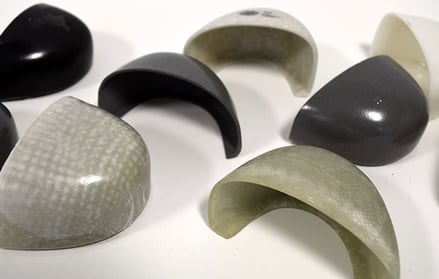 And it’s safety scenarios like the ones above which have led to a scuff cap abrasion test being included as an additional feature in the new EN ISO 20345:2022 safety footwear standards.
And it’s safety scenarios like the ones above which have led to a scuff cap abrasion test being included as an additional feature in the new EN ISO 20345:2022 safety footwear standards.
This means that for a safety boot to feature a scuff cap, this component must have undergone 8,000 abrasion cycles in the testing stage.
Footwear which includes this safety feature is marked with an ‘SC’ symbol.
Do you know all the new standards for safety footwear and how you or your team could be affected? Head to our blog and find out.
And when you think about the amount of danger that this component reduces or prevents, it seems a smart idea that safety footwear purchasers get peace of mind that their boot can reliably safeguard their toes.
Part of a Protective System
So, the toes might be protected by the toecap, and the toecap might be protected by the leather. But for true safety, the whole system should be protected by the scuff cap. This way, you’ll be ensuring that every component is protecting you shift after shift.
If you think you need a scuff cap on your safety boot, head to our boot finder. Just choose ‘scuff cap’ along with any other safety and durability features you need, and we’ll give you our expert recommendations from the V12 range.

